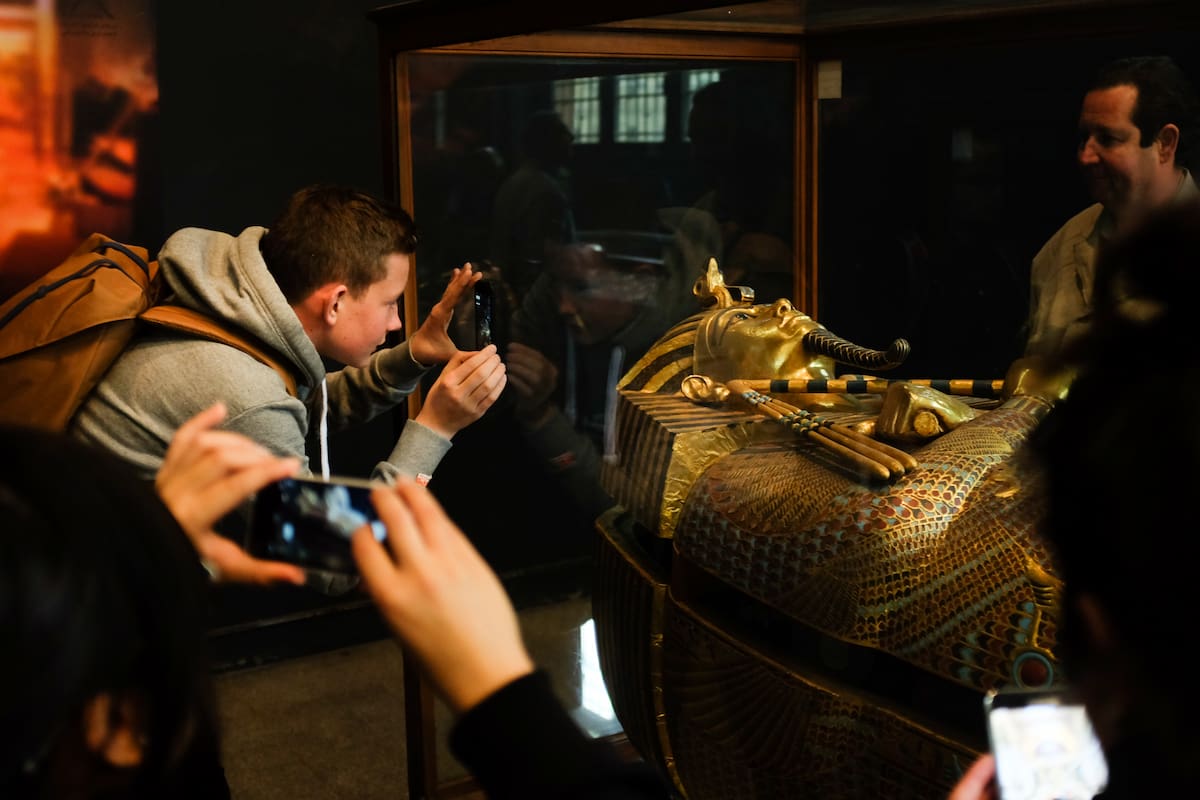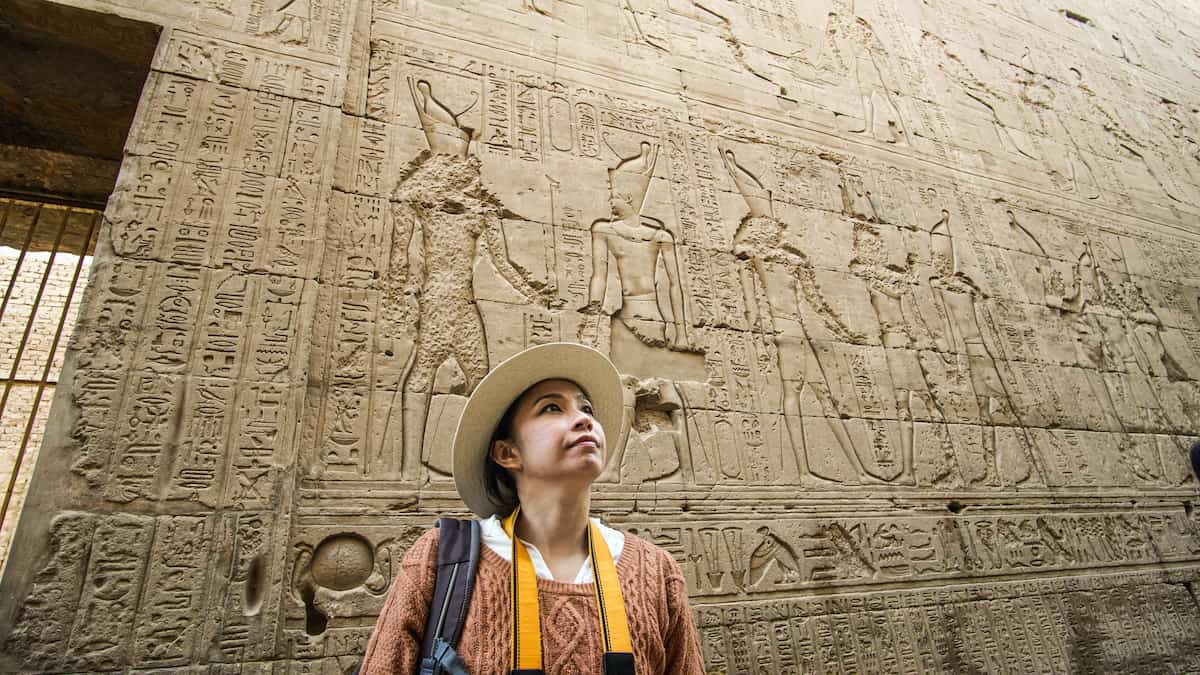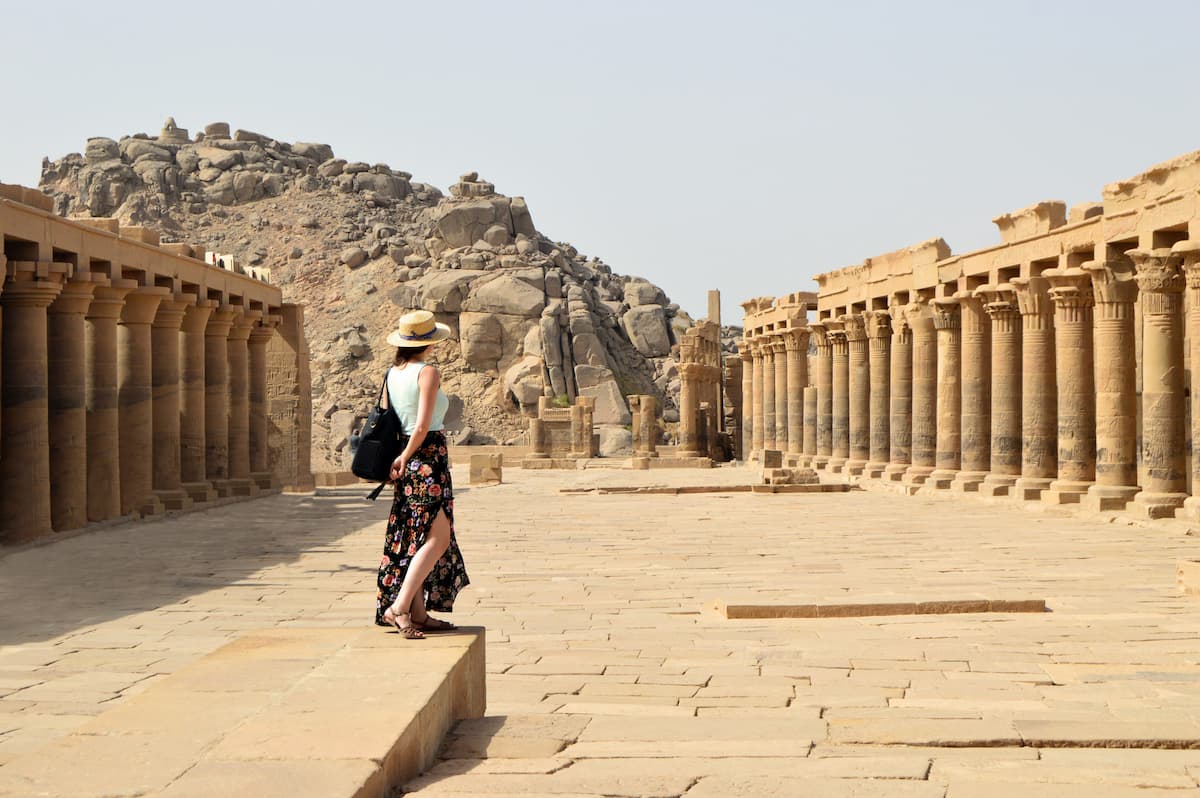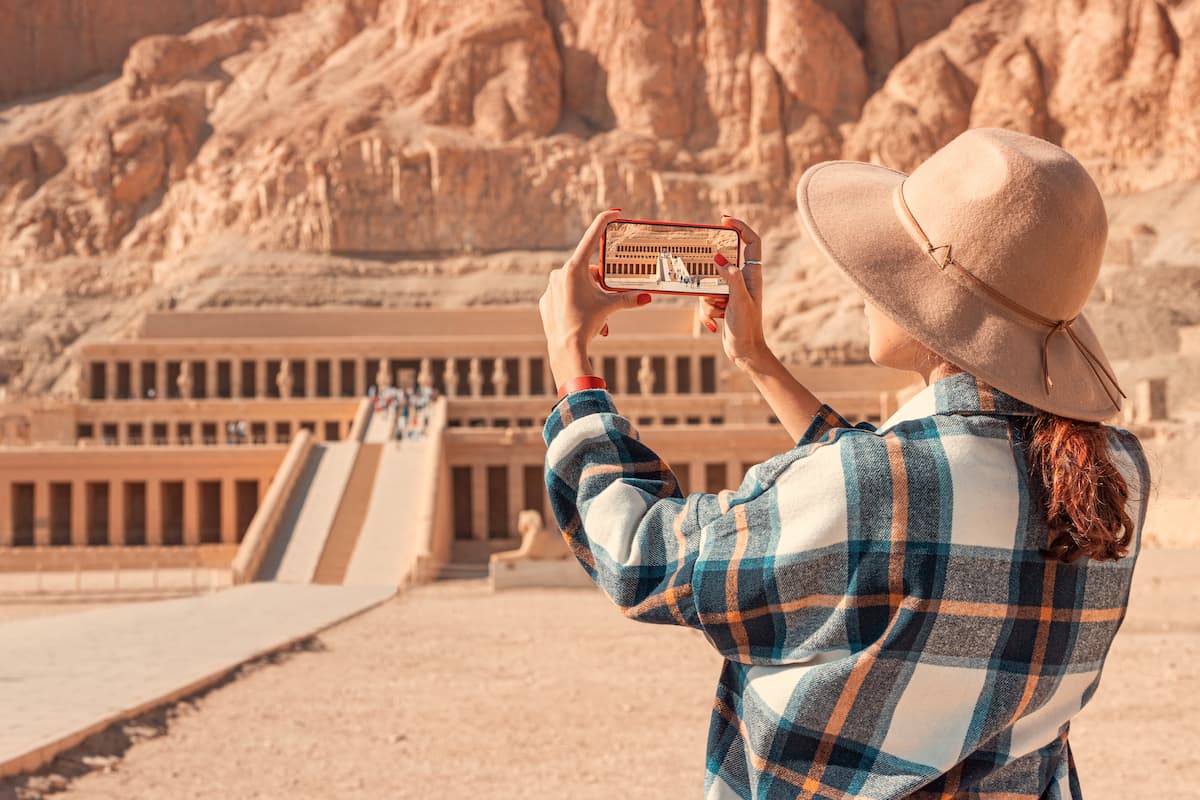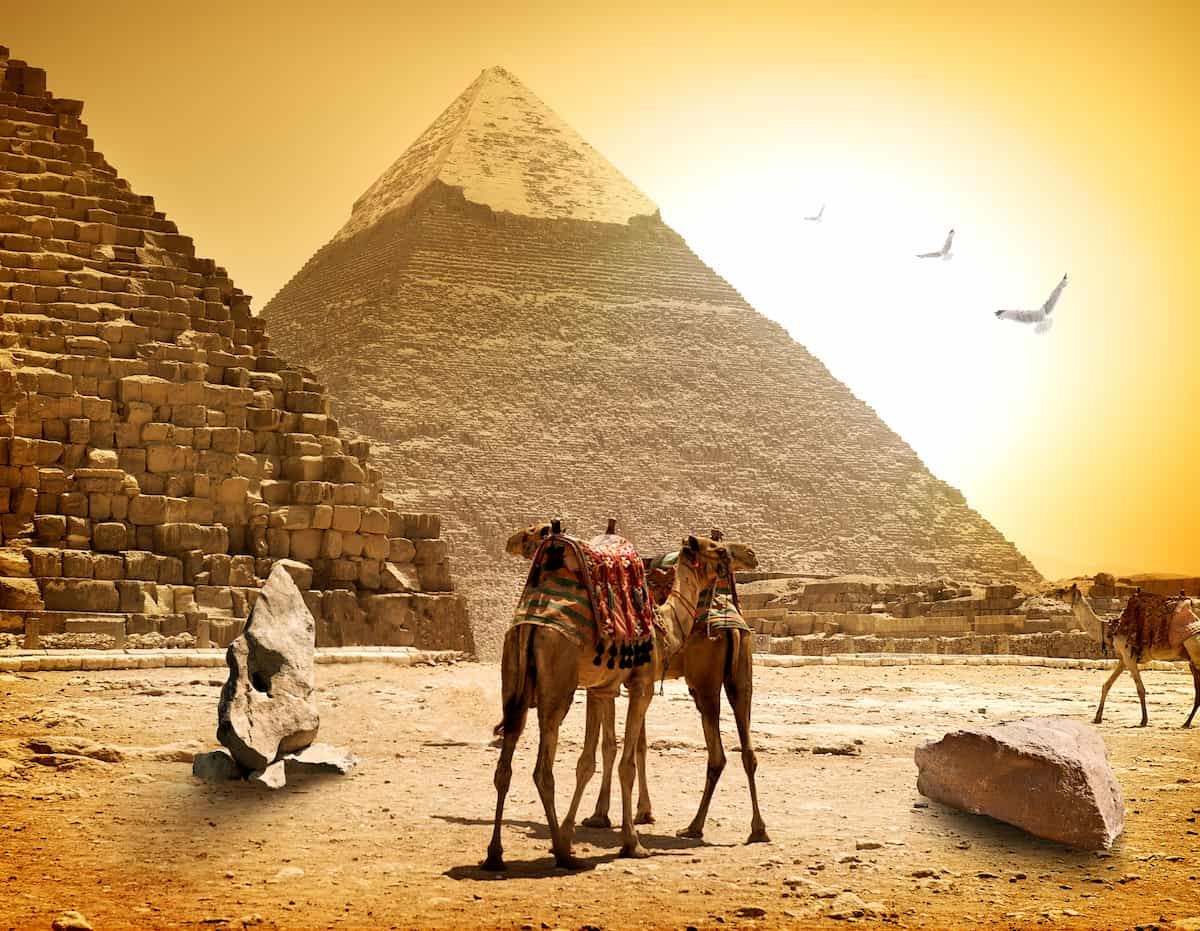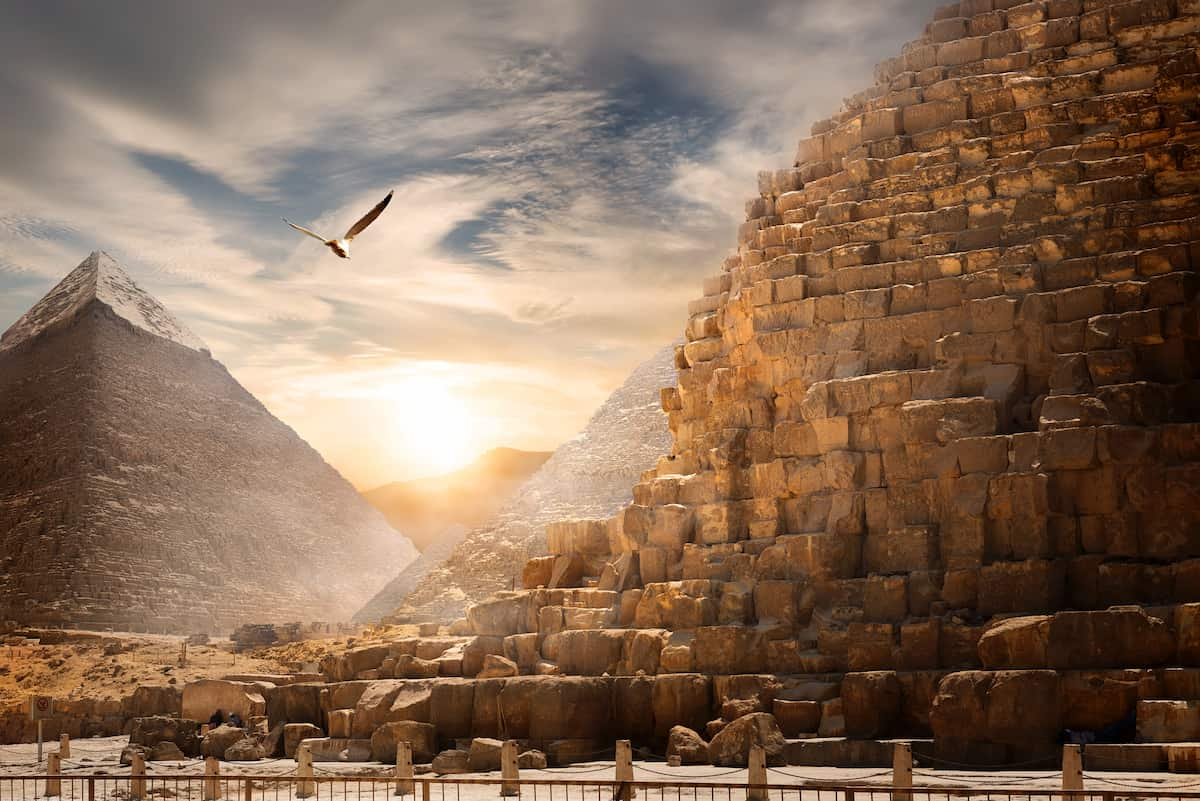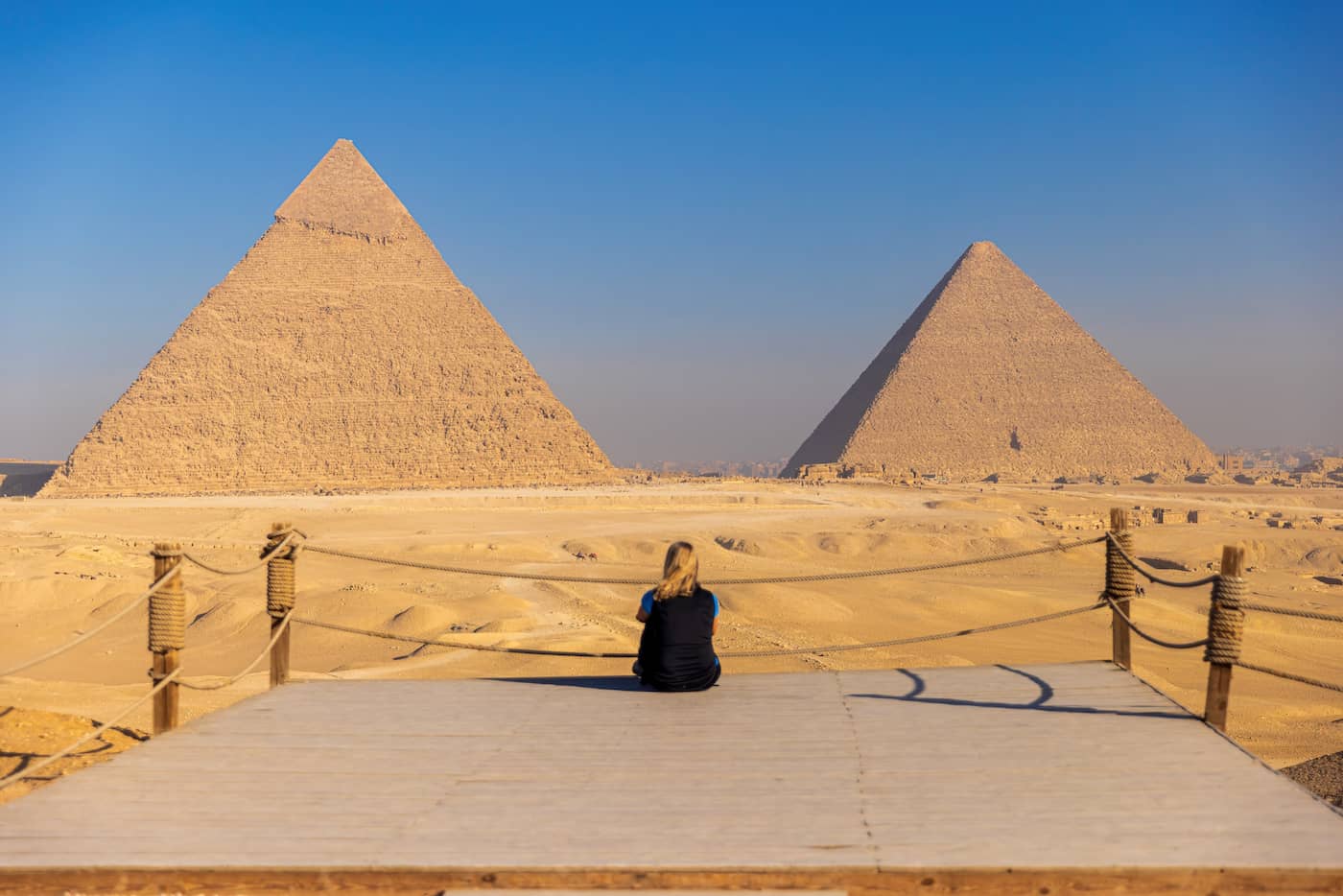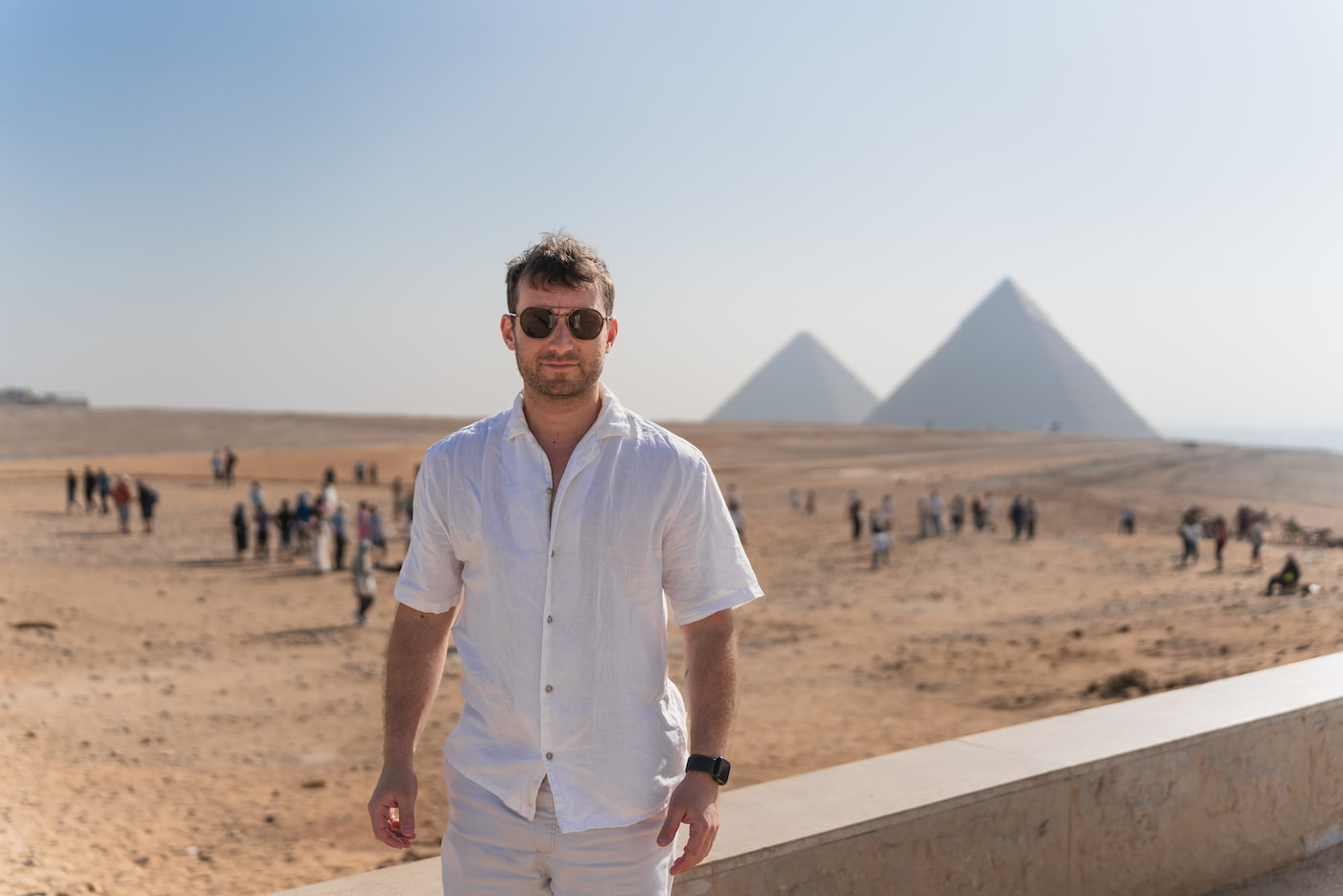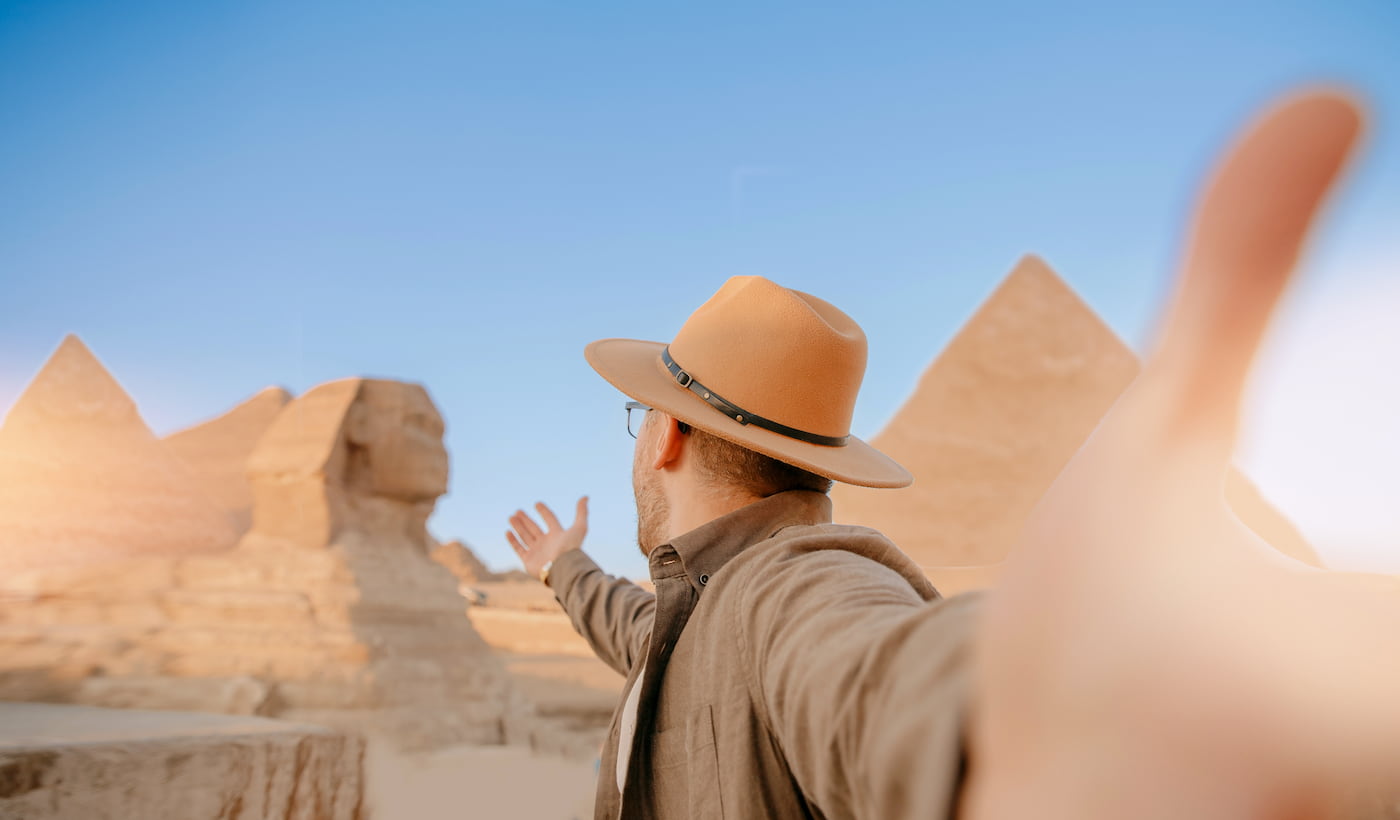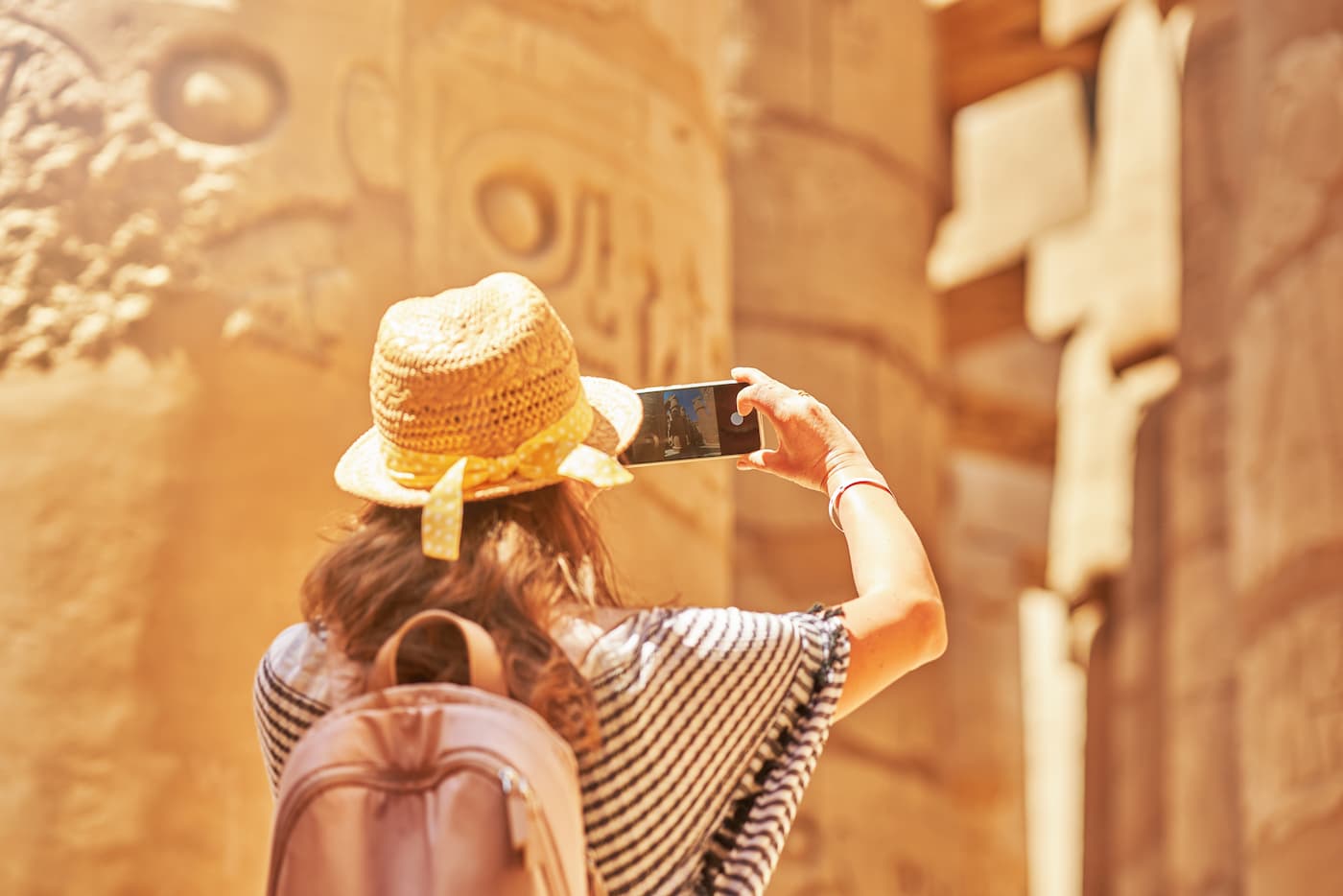🏺 Ancient Egyptian Artifacts: A Journey Through Timeless Treasures
Very few cultures can boast of having a cultural legacy as vast and enigmatic as that of Ancient Egyptian Artifacts. It has been a famous aspect of Pandora’s box from ancient times, with beautiful golden and other ornaments that lie there, parchment after parchment hardly ever deciphered and finding their way into many a sculpted page of history, to mention but a few.
And yet there is no wonder or great mystery why such items are always in the air of interest, as some of them lying in the Egypt Museum or being flashed in the TV crime dramas make everyone’s mind go “Egypt again?”
But what are ancient Egyptian artifacts? They are a large amount of remains archaeologists yield as crafted items, tools, art objects, and articles of religion. All these objects cover a wide range of things and include items hidden away in Tutankhamen’s tomb, as well as simple pieces of pottery broken somewhere. Each such object provides a record of the rites, customs, and practices of a culture revered by many generations of people across the globe.
It is not just that the pieces are attractive, as they are increasingly piquing scholars’ interest in trying to learn more about them.
2. What Are Ancient Egyptian Artifacts?
Ancient Egyptian artifacts are items physically made and employed during Egypt’s rich political history, starting with the Old Kingdom (around 2686–2181 BCE). They go as far as the Late and Greco-Roman Periods. Artifacts act as a bridge to present-day Egypt’s customs, religions, and governmental structure, its history being housed in tombs, prayer spaces, and archaeological sites from centuries ago.
The list of ancient Egyptian artifacts is inexhaustible: sacerdotal masks, representations of their deities or pharaohs, working implements, amulets, papyri inscribed with pictures or a script known as hieroglyphics, together with precious gems. There were those from daily home life, and then those that were revered as being linked to a deity or the Pharaoh.
These parts were composed of many ingredients that served a purpose based on either their cultural significance or their practical benefits. Common materials used in Egyptian artifacts include:
-
Gold – sacred and associated with the gods.
-
Bronze – used for weapons and tools.
-
Faience – glazed ceramic used for amulets and figurines.
-
Limestone – a favorite for temple carvings and sculptures.
-
Papyrus – for scrolls and documents, often inscribed with sacred texts.
Understanding what qualifies as an artifact helps us appreciate the craftsmanship and cultural meaning behind every object found in Egypt’s ancient sands.
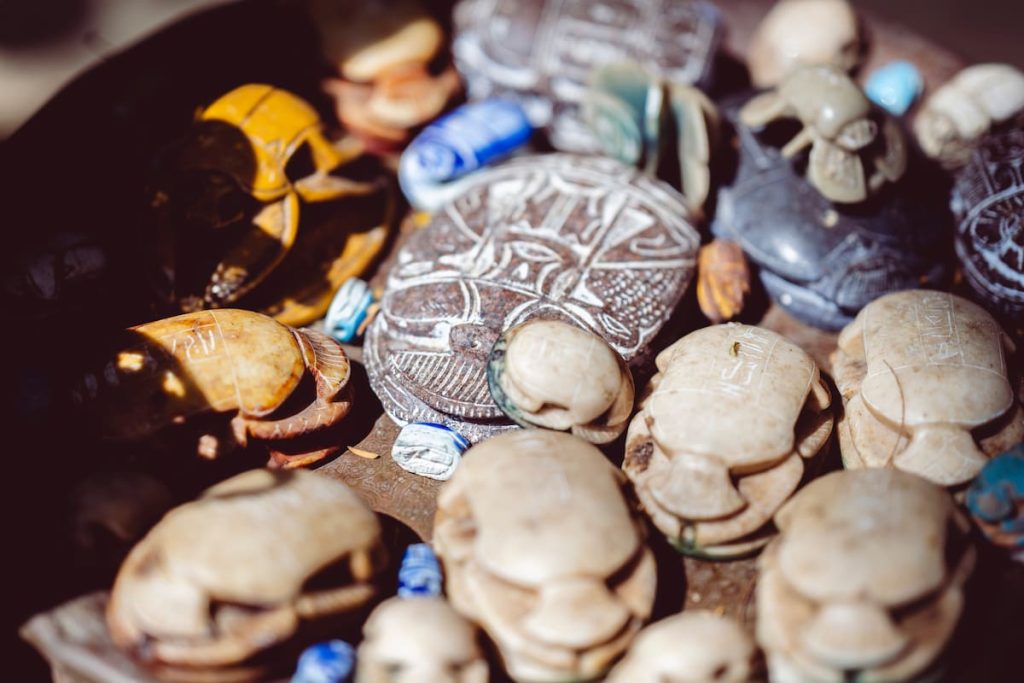
3. Most Famous Ancient Egyptian Artifacts
Histories and various objects from the ancient Egyptian period have some fascinating and one-of-a-kind treasures that have delighted the interest of the world for years. With stones and alloys used in it, this Tutankhamun golden mask is an icon of the 18th Dynasty from Egypt. A Rosetta Stone, a peculiar rock with unique inscriptions, made it possible to break the code of the ancient hieroglyphic language. Other indicated items are the Narmer Palette, a depiction of the Egyptian kingdom, and the sculpture of Pharaoh Khafre, which superbly demonstrates the peak of both political and aesthetic expression. Canopic jars and the Book of the Dead also reveal a wealth of knowledge on the subject of life after death and what the Egyptians believed. Nevertheless, these are the important reminders that reflect the identity of the Ancient Egypt civilization.
a. Royal Artifacts
Artistic presentations and legal artifacts from Ancient Egypt are beyond and above excellence. Still, the treasures of King Tutankhamun, which were discovered almost complete in the year 1922, are most iconic. It’s the gilded mask decorated with lapis lazuli and crystal that represents divinity and royalty among friends and foes, or just strangers. For example, there is a richly-posted chair also covered entirely with gold and other accessories revealing nearly every day activities of members of the pharaonic family, displaying the greatness of Amarna art.
Even the things and merchandise that are considered less important, his gold-plated shoe is there to stress the overtly decorative aspects on which status and death seem to be pinnacles, no matter the place of kingship. It opens up a treasure trove and heart of a young king, revealing a world that has been guarded and personal to the otherwise ordinary world.
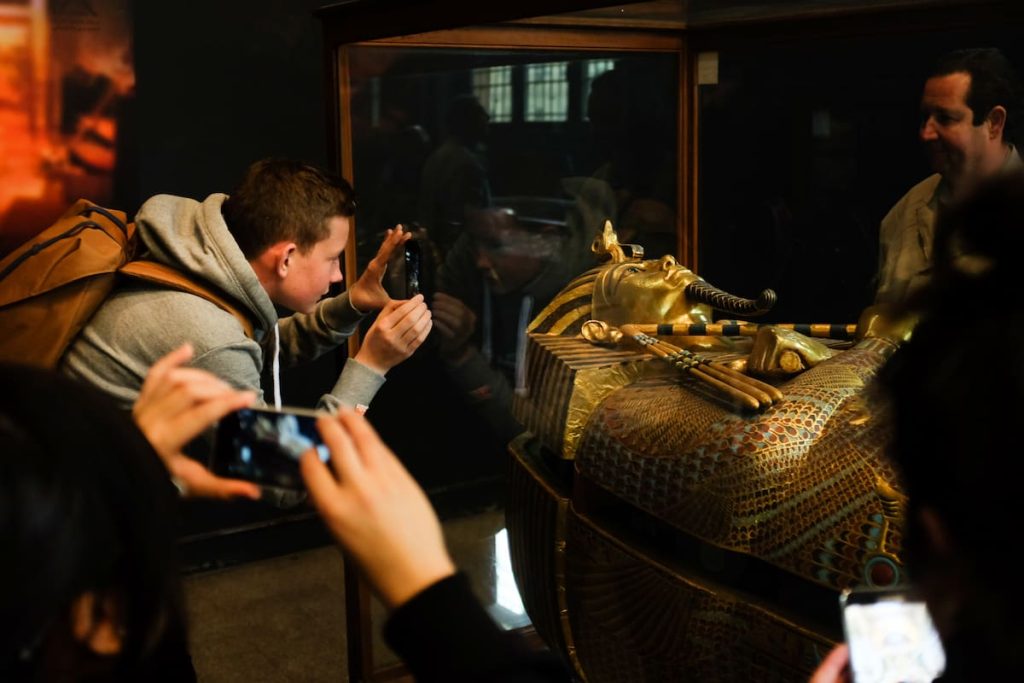
b. Religious Artifacts
Religious artifacts played a significant role in funeral customs and spiritual practices in Ancient Egypt. The dead’s internal organs were measured and legitimately kept in several bottles called Canopic jars. One of the Four Sons of Horus was responsible for the safekeeping of each part of the body. Ushabtis are other types of grave implements. These small terracotta figurines stood for the corpse and were supposed to work for it in the new life. In the case of jewelry, objects with such properties as an Ankh, scarab (symbol of rebirth and transformation), and the Eye of Horus (symbol of protection and healing) were placed on bodies. This was done to request good health, protection, and immortality in the afterlife. Such items are indicators of the deep spiritual expression of the people and their practices in the afterlife.
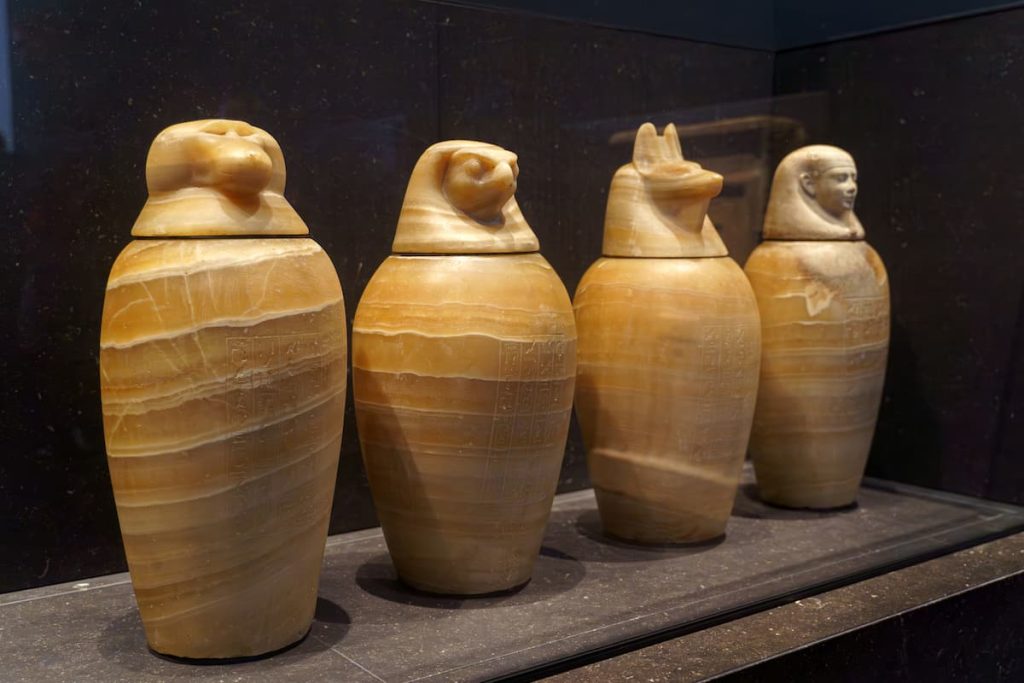
c. Funerary Artifacts
Exciting discoveries in Ancient Egypt have enabled scholars to get hold of invaluable evidence of the spiritual beliefs, practices, and rites of death, and above all, the funerary artifacts in this collection are the most outstanding. Mummies are among the most well-known of these relics, for they were particularly designed to last forever or at least for the prescribed time. Loved and respected members of society were preserved in this manner to ensure their presence in the next world, and thus, mummification was performed on them.
The bodies were typically placed in beautiful sarcophagi adorned with intricate images, sometimes painted with magical spells and depictions of gods such as Osiris and Anubis, which symbolized the possibility of resurrection. As much as these other objects were important, the written material was equally of great important. These were Books of the Dead scrolls consisting of incantations, hymns, and moral advice that were written on papyrus to help the deceased negotiate the perils of the other world and attain everlasting life.
It was not only Pharaohs that had such items buried with them; it was also possible for high-ranking persons and even some humble society members with the desire to be buried with such items. All of them collectively are a testament to the fact that the Egyptians spent unimaginable amounts of time in the quest for perfection, even going as far as realizing their lives on earth are a carbon copy of themselves as they eternally protrude into the world beyond.
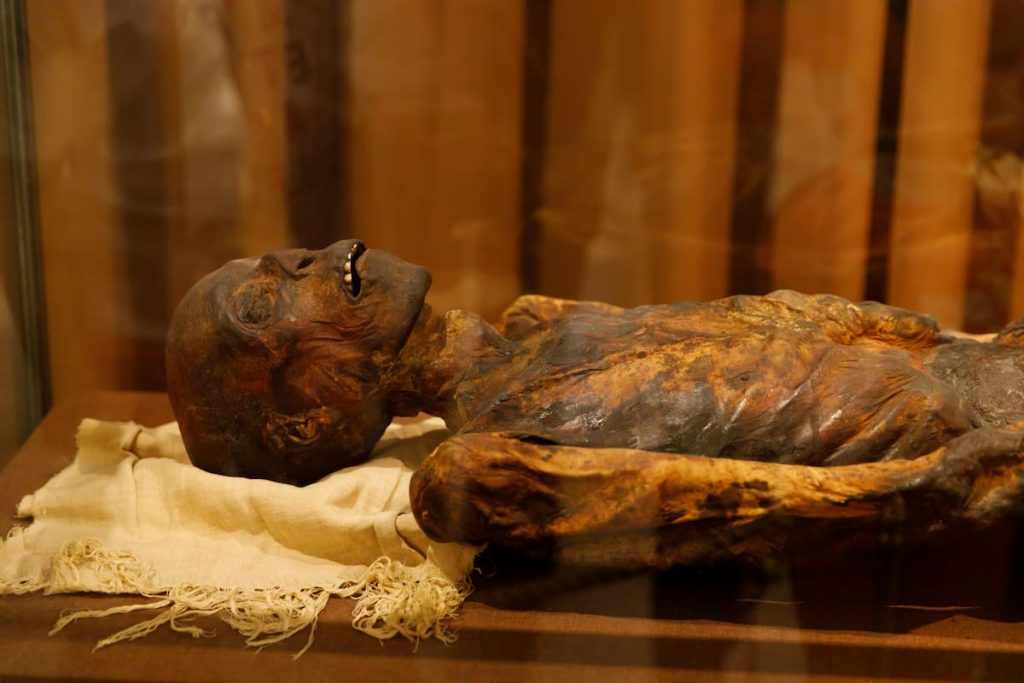
d. Everyday Life Artifacts
Several useful things of everyday life that originate from Egypt are able to give an idea about either ordinary aspects or human creativity and thoughts of one of the most ancient and developed civilizations in the world. Pottery and tools, for example, indicate how people of those times cooked, fed themselves, prepared their houses, and many other things, whereas expensive jewelry made of gold, turquoise, and faience indicated that people were also quite prosperous and spiritually attributive. Papyrus paper, as a multipurpose writing material that was written on and then stacked mainly for religious purposes and legal regulations, requires notes on literacy as part of the population regulatory formations in Egypt.
Artefacts bearing the stamp of personal hygiene in Ancient Egypt, such as mirrors, combs, and jars of cosmetics used for embalming, practices that the rich are usually involved in, are also encountered at every section of the tomb. While it is true that these do not have the appeal of Tutankhamen’s riches, they are nevertheless just as precious when it comes to ascertaining the lives of the people living along the Nile. In addition to these, many of the artifacts are already well-known names, such as the Egyptian Museum, hosting historic shrouds, equipment, and royal utilities besides them, as it provides a much broader view of the ancient Egypt period.
4. Symbolism Behind Ancient Egyptian Artifacts
Egyptian remains were used practically or aesthetically only to a certain degree; they were charged with lots of meaning reflecting Egyptians’ attitude to life, death, and the deities is indescribably profound. For instance, a familiar emblem such as the scarab carried revitalization after death and transforming ideas; meanwhile, the figure of the crux inferior was used as a symbol of life and death effectively. In most cases, the hawk, which was the embodiment of the god Horus, the sky god, had the implied significance of watching and guarding, as well as the power of a ruler.
Those symbols were not just simple decorations; they were solid amulets, pieces of jewelry, and objects of worship or burial designed to have a spiritual effect. A significant number of artifacts were in adherence to the concept of Ma’at, the transitional phase where purpose and function are at their most the least frustratingly unbalanced and untenable. This is evident in the symmetrical designs, harmonious proportions, and hieroglyphic writings almost always found on altar objects and funerary items. Known or not, these, if they were made, would be used for religious ceremonies or locked in sarcophagi in the case of funerary purposes, serve in impressing upon the religious symbolism and beliefs inscribed in statues and other objects attributed to ancient Egyptians.
🏺 Explore the Ancient Egyptian Civilization
Journey through time and uncover the mysteries of Ancient Egypt from the Pyramids of Giza and powerful pharaohs to sacred temples and daily life along the Nile. A rich heritage awaits your discovery.
5. Where Were Ancient Egyptian Artifacts Found?
Artifacts recounting the past and culture of ancient Egypt are dispersed among many of various sites of extensive tenure. In most cases, tombs which were temples for worship, god’s representations, and graves for the disposal of deceased persons have served as locations of finds of much importance.
One of the best-known locations is the Valley of the Kings, located beside Luxor, where in 1922 the tomb of Tutankhamun was found almost intact, containing magnificent gold artifacts, death gloves, and sacrificial articles. In the vicinity, the ruins of the Luxor Temple and the enormous Karnak complex are adorned with numerous statues, inscriptions, and extant offerings that represent the religious practices associated with the ruling of the royalty.
Sacred Sites Revealed
Situated even farther north, the Serapeum of Saqqara in Egypt is not only famous for holding Egypt’s first ever pyramid, but has also offered ancient painted coffins, ranks of animal mummies, and even all the everyday stuff that people used in their expectancy of the other world. They go on studying the Giza Plateau, the pyramids, the very builders’ place of the Great Pyramid, and the Sphinx. The results are stunning: tools, people’s houses or workers’ settlements, and specific artifacts that were utilized during the creation of these gigantic structures.
Even mummies and relics were found in unopened tombs and underground areas, ancient tombs which were located in the deserts, and preserved ancient tombs which lay as risen temples under water. This only serves to prove that the ancient Egyptian story is no longer static. However, these findings do not merely underscore the achievements of long extinct, past civilisations but instead, even more importantly, provide close-up images of the clergy, workers, craftsmen, and the upper class.
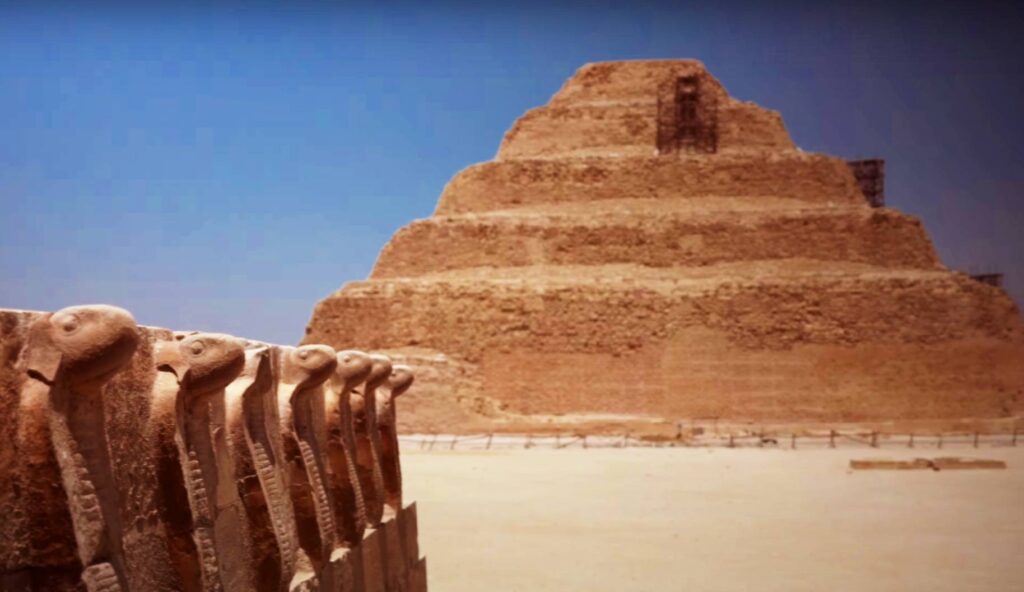
6. Top Museums to See Ancient Egyptian Artifacts
When memories of Ancient Egypt fill your imagination, museums come to the heart of attention. And you would not want to miss it; therefore, start checking on some of the most important museums.
Odd as it may sound, since Egypt is largely unexplored and most of its treasures are still in its travelers, such a goal is quite achievable.
First and foremost, you have to visit the city of Cairo and head to the Egyptian Museum, which is now considered the most famous thanks to its extensive number of exhibits, including the treasures of the young pharaoh Tutankhamun. And then soon, it will be time to move the attention to the very awaited Grand Museum of Egypt (GEM), which is found close to the pyramids of Giza, with the promise of the most advanced collection of Ancient Egyptian Antiquities in Egypt.
Apart from Egypt, where these museums are located, other major museums around the world have many precious treasures, including the artifacts of ancient Egypt. For instance, the British Museum, which is based in London, boasts the Rosetta Stone, a wide number of statues, mummies, and stelae. The Louvre Museum in Paris is home to an array of pharaonic ruins, the delicate statues and sarcophagi crafted centuries ago. In addition, the Met, or the Metropolitan Museum of Art, based in New York City, has complete architecture of tombs on display, as well as many impressive things about daily Egyptian life.
With these institutions, the past and present, beginning with the earliest civilization, are jealously preserved in order to share the rich past of Egypt with the rest of the world in a pictorial form.

7. Controversy: Stolen and Returned Artifacts
The issue of stolen Egyptian artifacts has long been a contested matter in the archaeological and cultural heritage sector. Over the years, many historical and cultural objects were wrenched forcefully away from Egypt; in several cases, stolen during colonial expeditions or removed through more illegal means. By now, a number of spectacular old things have been brought from Egypt to today’s museums or private collections.
But Egypt has pursued a policy of bringing back its ancient Egyptian artifacts, justifying this policy was the fact that the artifacts of another people can be a historical identity of the larcenous country. Thanks to litigation, the efforts to argue the case before foreign and international courts, as well as promoting the issue within the country, have already earned Egypt a few adverse decisions. In the near past, artifacts have been successfully turned from the United States, the United Kingdom, and France, and in which countries, each item taken has been able to mark a change in the attitude concerning cultural heritage within the international community.
Still, the struggle over future ownership of these treasures goes on. Each artifact that is returned, however, brings Egypt nearer to reviving its culture.
8. Famous Ancient Egyptian Artifacts
One of the most significant contributions of ancient Egypt to the world is its invaluable cultural heritage available in the form of artifacts, each one giving insight into power, religion, and simply normal everyday routines in the era of the Nile. The most recognizable and well-known is Tutankhamen’s funerary mask, which is the most valuable treasure found in the tomb of the young ruler in the Valley of the Kings. Also greatly admired are other stone monuments, including the Rosetta Stone, which was discovered in 1799 and is kept in the British Museum.
A few of the other historical masterpieces are the sculpture of Khafre, which is a clear testimony to the mastery of ancient sculptors, and the Narmer Palette, an illustration of the unity of Egypt. It is the canopic jars that were used as protective but decorative containers for all the empty spaces inside the mummies and the sarcastic and ironical Book of the Coming Forth by Day, which records the dead man’s journey to the underworld, that are worthy of mention.
As a whole, none of these exceptional works simply indicates how advanced the civilization of the ancient Egyptians was, but they are also the subject of interest for contemporary studies as well as the general public.
-
Tutankhamun’s Mask
It can be argued that Tutankhamun’s mask is one of the most world-famous items ever found in Ancient Egypt. In 1922, Howard Carter discovered it in the tomb of a young ruler in the Valley of the Kings (KV62). It serves as a perfect example of the artistic and symbolic accuracy of ancient times. Carved out of solid gold and encrusted with semi-precious stones such as lapis lazuli, obsidian, and turquoise, the mask is very heavy and weighs more than 10 kg. Every edge has a thickness of more than two and a half millimetres, such rich thickness gives off the respect of the piece, but more so endorses the presence and power.
When put over the dead body of the mummy, the mask was far from being purely ornamental; it was believed to bear the king’s protection and promote his deification in the next world. The face is calm, even beautiful, and wears a nemes headdress with a uraeus cobra and a vulture, all denoting rulership and divine power.
Even today, the mask often associated with Tutankhamun’s name is anchored not only towards the history within Ancient Egypt, but also several people around the globe who are enthralled, grappling with the mystery, elegance, and value of the object.
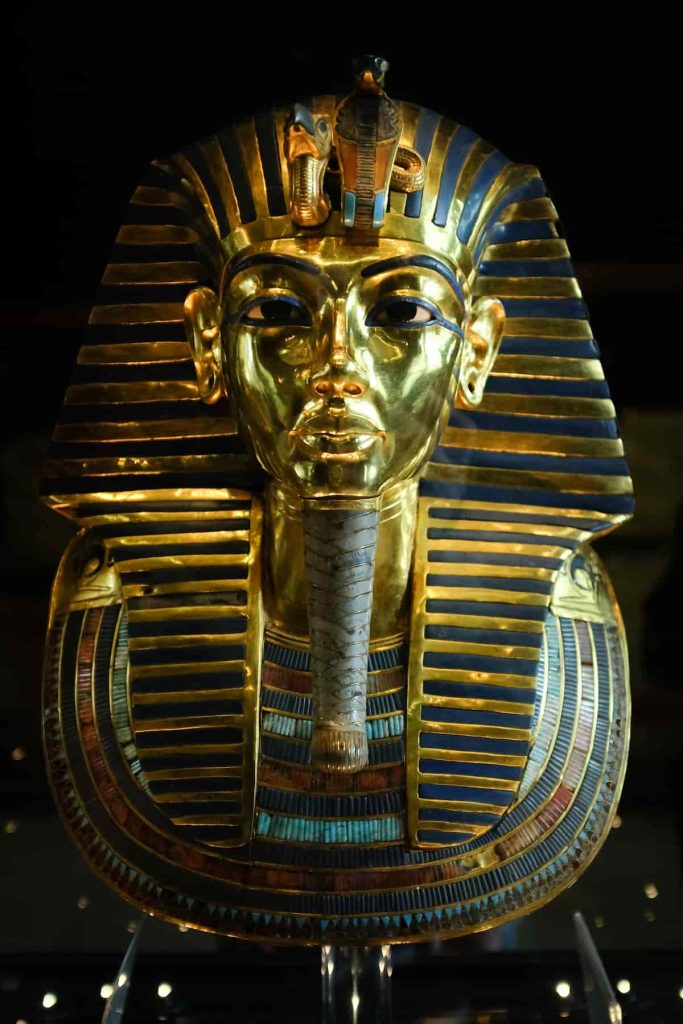
-
Narmer Palette
An ancient Egyptian artifact that is highly important and dates back to 3100 BCE or so is the Narmer Palette. This is proclaimed to be a single section of black famous schist that was found at Hierakonpolis after the unification of Upper and Lower Egypt, while King Narmer became the first actual Pharaoh of Egypt.
Functioning as a proclamatory relic intended by its design, the palette captured both the madness that tends to accompany king power and the weakness that stems from divine rule. On one face, Narmer was persuasively engaged in the conquest of the enemy while sporting the crown prevailing in Hebu, which his dynasty did first. On the opposite side, he wore ‘The Red Crown’ of Lower Egypt, standing proudly above his foreign captives with headless corpses in process away from him. Ministries of several other divine entities are also depicted through scenes which include Horus, the falcon god, etc., showing mixed supernatural animals. All these directly result in reinforcing the influence and religious sanction of the king.
Though most likely a great piece of art was discarded, it is important to note that the Narmer Palette is a rare piece in the history of the early dynastic period and the achievement of political unity in Egypt.
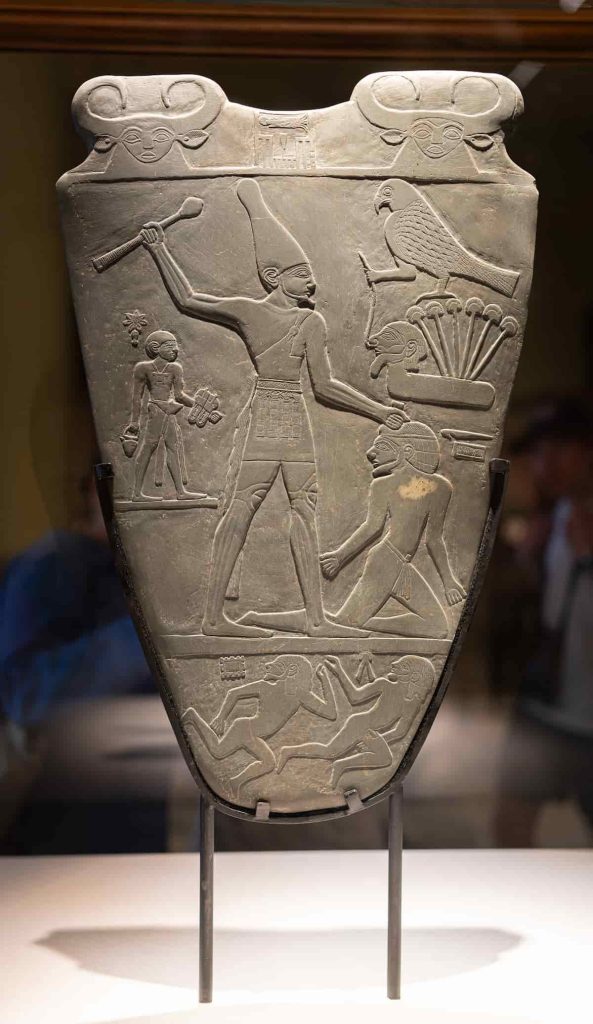
-
Canopic Jars
Canopic jars played a very important role in the preservation of the body in ancient Egypt. Unlike ordinary polychrome chest funerary statue (which is a container of the embalmed mummy in a mummy bag made up of fragments of different colored stones, for example, snake silts, while fully raised burial chamber embalming even in a central subsection of a vault architectural structure), they contained procured artifacts from the afterlife.
However, the cultural significance of canopic jars, akin to a select type of furniture for the dead, such as khat and torques, emitted an unequivocally different message to the observers. Not only did they serve as utilitarian items like chairs, beds, tables, etc, but also demonstrated a sacred, cult character and importance to the deceased.
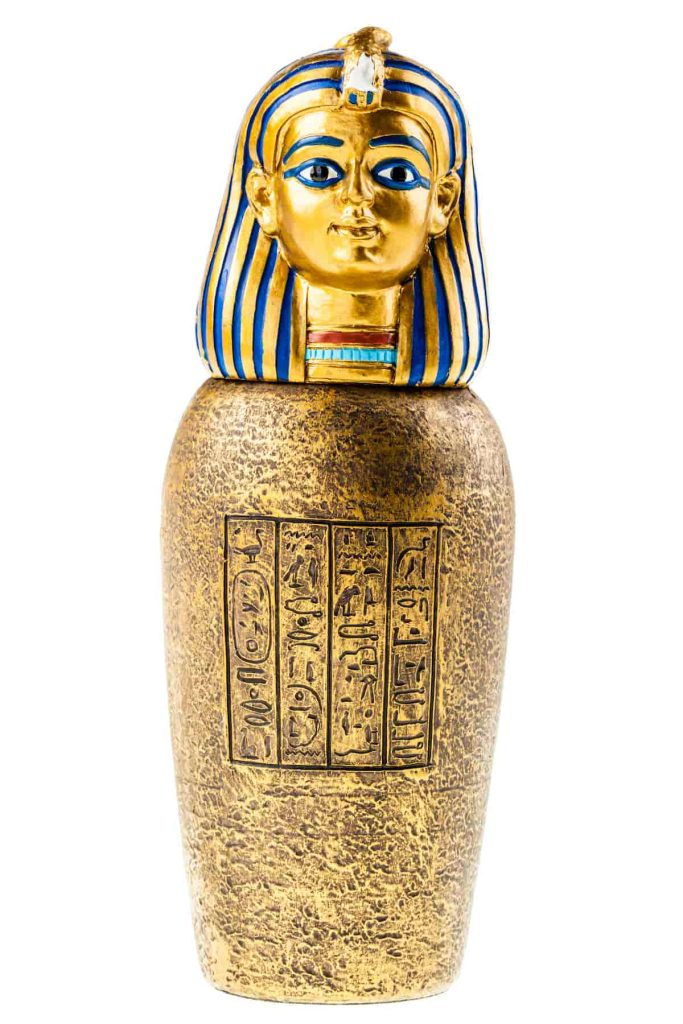
⚰️ Read More About the God of Death
Dive deeper into the mythology of Anubis, the jackal-headed god who guided souls into the afterlife. Explore his role in embalming, judgment rituals, and how he became one of ancient Egypt’s most iconic deities.
-
The Rosetta Stone
The Rosetta Stone is considered one of the most vital discoveries of all time concerning archaeology as it has contributed towards unveiling of hitherto unknown ‘Egyptian hieroglyphic language’. This monument is believed to have been discovered just when the last days were coming to an end, and therefore its usage does not surpass that year of 131. The Rosetta Stone was found on 15 July 1799 by a French soldier. It was in the town of El Rashid (a.k.a. Rosetta), as the English call it. The Rosetta Stone cannot date to earlier than 196 BC, which is the year of the 9th Ptolemy’s reign.
It’s incredible for the simple reason that it contains the same decree in three different languages: Hieroglyphic, Demotic, and Greek. This would allow scholars such as Jean-Francois Champollion to make a comparison of the writing systems and ancient hidden language of the pharaohs to her eventual interpretation.
The Rosetta Stone, which is now comprised of granodiorite, is permanently on display at the British Museum in London, where it is one of the most popular attractions as motivations invariably range from those of scholarship to explanations of the source of the Rosetta Stone: the bridge between the Greek and Egyptian worlds to the Roman and Local cults of the Giza gods etc.
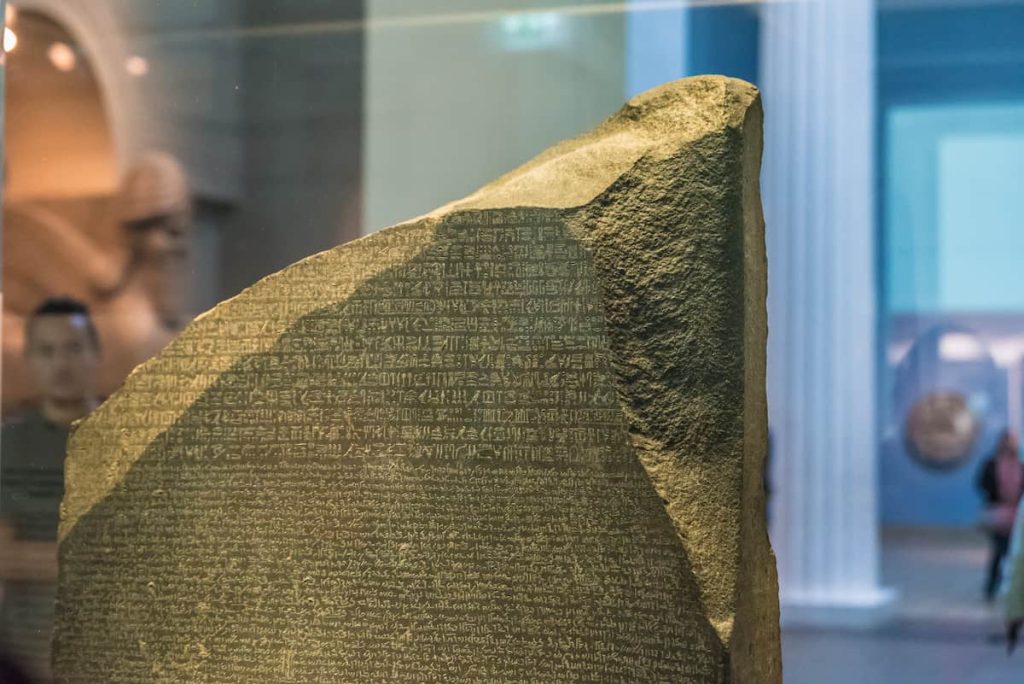
-
The Nefertiti Bust
Brought from ancient Egypt, the Bust of Nefertiti can easily be described as one of the most popular artifacts and one of the most beautiful to look at. The making of the bust was carried out by the Egyptian artist Thutmose in Armana soon after the Amarnian capital was built. It was most likely created during the 18th dynasty of Egypt, by the famous Pharaoh Akhenaten and, most particularly, his queen, Nefertiti, who is also one of the most powerful women the world has ever known. Every young Egyptian girl knows just who that is, and so does every young man and every grandparent, because Nefertiti was, after all, the queen of the most powerful man alive at his time, Akhenaten of Egypt, and his powerful and beautiful wife, as she has been portrayed in historical resources.
What is truly fascinating about the bust is its astonishing dimension and the acceptance of the conventional norms in the quest for beauty and excellence, which captured the imagination of historians and artists throughout the centuries for more than a hundred years. This matter has attracted a great deal of attention. Despite the fact that the sculpture is missing the left eye, it is not hidden anywhere and is preserved with proper attention to detail. Today, it is situated in the premises of the Neues Museum in Berlin, and the discussion about the repatriation of artworks and the destruction of museum and cultural heritage is still going on.
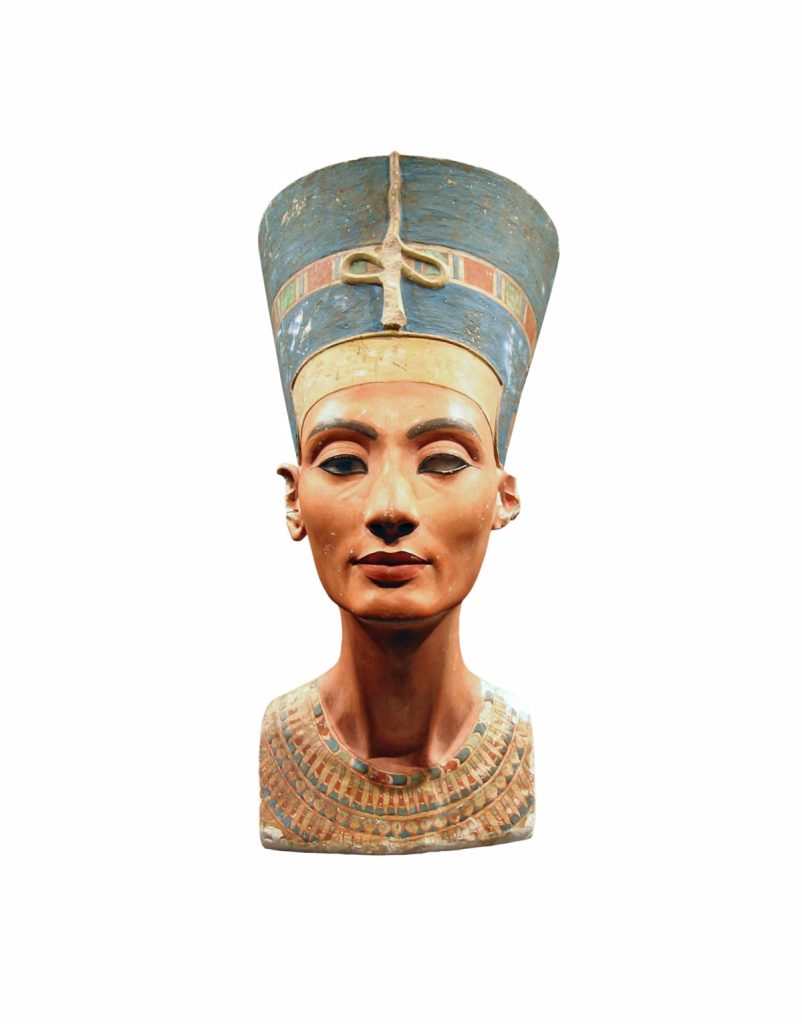
-
Khufu Statue
It is impressive how small and unassuming the Khufu Statue is as a work of art, despite the great history it represents. The statue was produced in honor of Pharaoh Khufu, who was the principal architect of the Seven Wonders of the Ancient World, specifically the Great Pyramid of Giza. Surprisingly, for all his achievements, this small ivory statue, which is about 3 inches in height, is the lone surviving three-dimensional figurine of Pharaoh Khufu.
It was not until 1903 that the description of gold-ivory was known to an Englishman who had been working in Abydos. Then there was no difficulty in identifying the British finds relative to the statues that were at least 1000–3000 years over the claim in the Parthian manuscripts. This statue shows the king seated on a horseshoe of fashioned bronze, with the crown on his head and the collar of a royal. Unfortunately, treasure does deny friendship as both beautiful and historic, this particular small statue holds an imposing place in Egypt and is one of the world’s pharaohs’ recordings.
Preserved in the Egyptian Museum in Cairo, all those who visit the Khufu statue will come to appreciate how the majority of Egyptian great men were documented orally, with nothing being left in the form of an image or even sculptural artifact, making the tactfully designed, manageable object of the feminine male figure enormously more valuable.
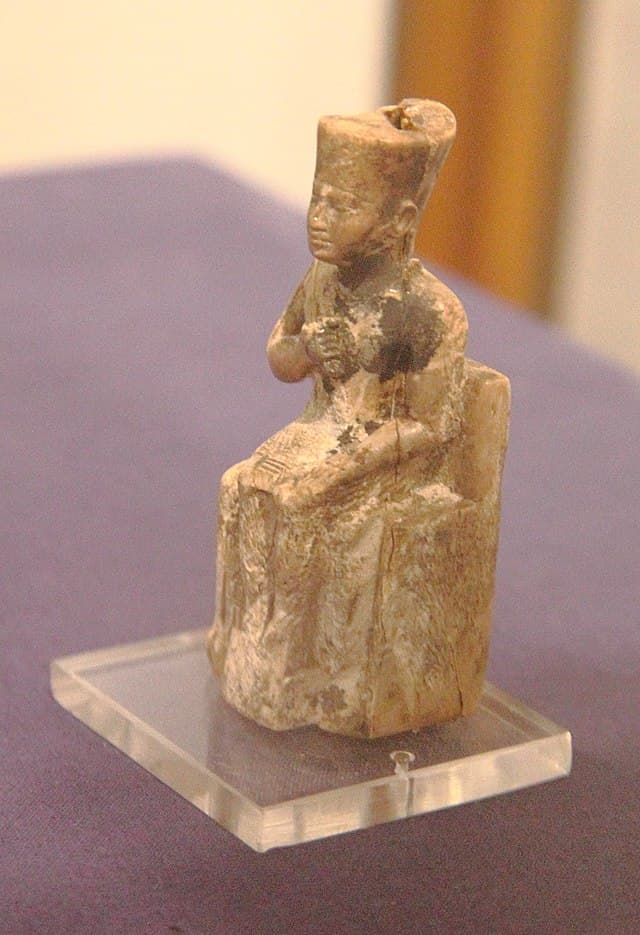
-
The Dendra Zodiac
The Dendera Zodiac is considered as one of the most complex and mysterious pieces of ancient Egyptian art which synthesizes such seemingly incompatible areas as astronomy, astrology, and mythology. This circular bas-relief is situated in a Chapel in the Temple of Hathor in Dendron and dates back to the Greco-Roman period, around the 1st century BC.
In contrast to the core ancient Egyptian artistic expression, which is extensively known for linear and abstract marks, the Dendera Zodiac, on the other hand, portrays a circular star system which is a worldwide known model, a style that can be ascribed to the glistening structures of the white frescoes found in palaces and train stations while incorporating styles of the Middle East and Far East astrology. It contains illustrations of the translator or introducer moon phases of the zodiacal planets signals and their galaxies of the known planets, even eclipse, alongside Egyptian goddesses and cosmic geometrical forms above the ceiling.
It was not until the year one thousand eight hundred and twenty one that the Zodiac was removed and transported to France where it has since lain in the Louvre Museum in Paris. Its incongruous removal, however, spurred the controversy on repatriation and cultural heritage protection.
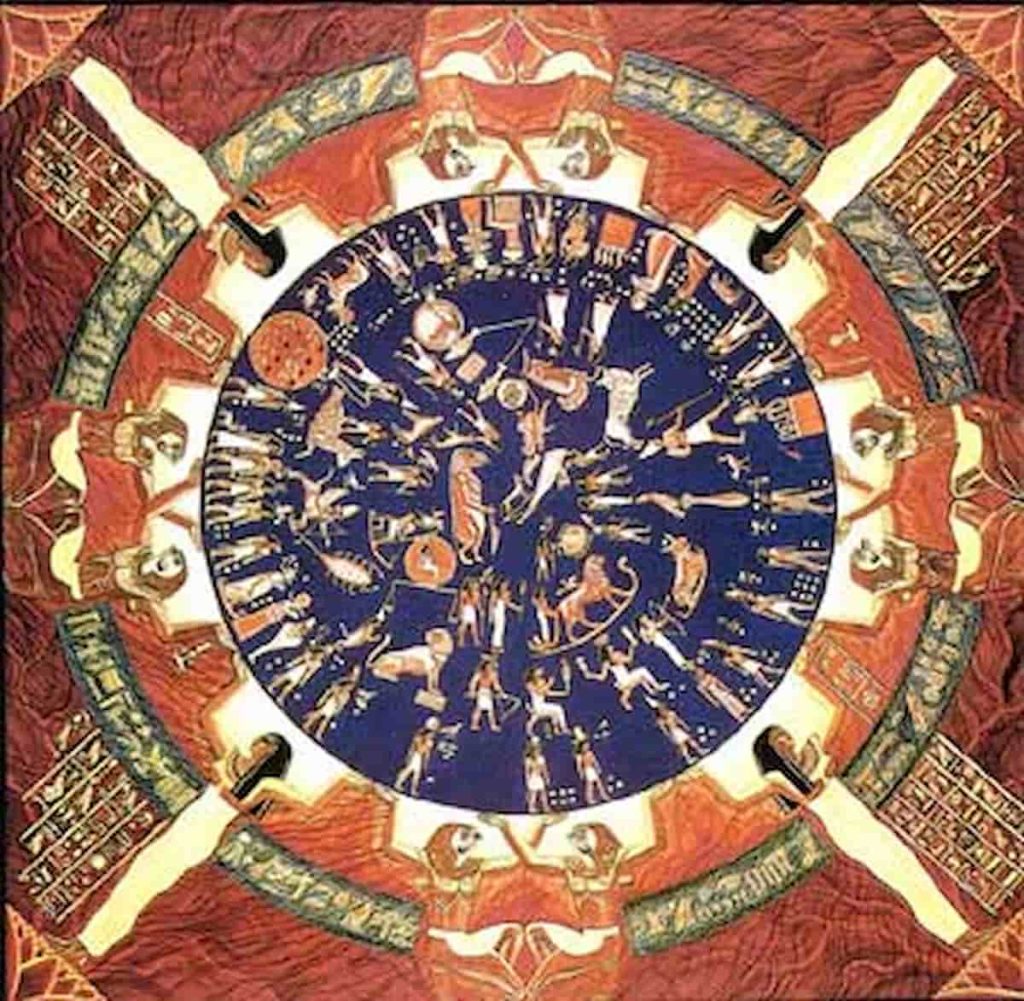
9. Preserving Ancient Egyptian Artifacts
It takes special skills and knowledge to maintain the antiquities of Ancient Egypt, as it is a blend of conventional techniques with the most advanced techniques of conservation. The preservation of the ancient objects of ancient Egypt is subject to many risks, including the arid conditions and thousands of years of history. This especially includes very delicate items such as white offering tables or jet papyrus scrolls, as well as the embalmed remains of people known as mummies. These conditions need to be addressed by the conservation of collections in which temperature and relative humidity are regulated, and, though they help to a very limited degree, ultraviolet barriers. This involves the need for careful and effective use of restoration techniques on the decayed parts and to prevent or head off any damage.
New age technologies have played a very important role in the field of conservation. CT scans that help in diagnosing diseases and injuries of decayed bodies have been improved, while the use of computers in archaeology allows for building or verifying the appearance of objects that have been destroyed or damaged, before excavating them for display or studies.
In Egypt, most of these activities are preserved by the Supreme Council of Antiquities, a body of local and global projects protecting the valuable history of the country. This has resulted in the preservation of a significant amount of artwork, which can be seen in museums and will be enjoyed for all time.
10. Fun & Surprising Ancient Artifacts
A great many ancient Egyptian relics that have survived centuries are not grand images or objects crafted from precious stone or metals, quite the contrary. Some of these items are incredibly intimate, eccentric, and fun altogether. Chief among these are, sadly, the mummified animals, which include the likes of cats, ibises, crocodiles, and even baboons. In the past these creatures were buried as acts of reverence to the gods. Throughout history, these living creatures are very vital to the religious beliefs of ancient Egyptians. Quite disappointingly, so far, no such animal mummy has been discovered where the form of a human being’s hunting and burial had fallen into the feet of the cat.
In fact, everyday articles and those items which are used at home tend to be even more interesting. Egyptians were unable to resist cheating in games, and one of the oldest board games hauled ‘Senet’ is disclosed in various tombs with pieces and game boards – thus attesting to their knowledge that the extra soul lack of the netherworld had no guiding worse than entertainment.
Countless clay tablets from ancient Sumerian cities bearing cuneiform symbols are boringly lists of deeds and gifts to gods and kings, repetitive accounting and administration, and other topics which are irrelevant for most people. These documents are along the lines that I’m having a great and wonderful time.
11. Why Ancient Egyptian Artifacts Still Matter Today
Prehistoric elements of Egyptian art are not just remnants of a bygone era, though people of today like to think much effort and energy spent on it is worth remembering. The influence of this art can manifest itself be it in buildings or dresses, while it is employed by them in teaching and museums, both of one’s own and foreign. Also, these objects make history interesting, assisting teachers and students to get a clear grasp of the religion, politics, culture, and customs of a historical era.
In the case of Egypt, these objects are more than cultural heritage; they act as a People’s way of showing pride in their culture, which is why many people treasure them. Furthermore, they link the nation to its ancestry by bridging the rather wide gap and help in creating an understanding and memory. Moreover, they encourage many people to come to visit Egypt, to engage in continued research work, and help in the improvement of the economies of several countries through collaboration.
In summary, the significance of these prehistoric statues, despite the knowledge value associated with the study and preservation, is not to bind the responsibility to the historical condition; there are implications for the current and future conditions of the civilization.
12. Conclusion
Whether it’s elegant golden masks, enchanting religious scrolls, or bizarre mummified creatures, those artefacts of the ancient Egyptians are creating tremendous interest with their primitive elements, known to man. They’re not just showing off the power and sophistication of a mystic state; they’re also providing insight into the people’s philosophy and art of the epoch.
You may be a dedicated fan of history, a traveler, or a curious individual; there is every possible reason for such a rich experience as immersing oneself in such a tradition through a tour of the best museums in Cairo, or even to go on a journey to the land of Egypt. The same romantic picture seems to come alive when visiting the Egyptian Museum in Cairo or seeing the temples in Luxor.
For a truly off-the-grid experience, you might as well take some tours that decipher the art of each artifact and location. There truly is so much more to Ancient Egypt than just its rich history, which is every bit as thrilling and magical as searching for hidden treasures.

